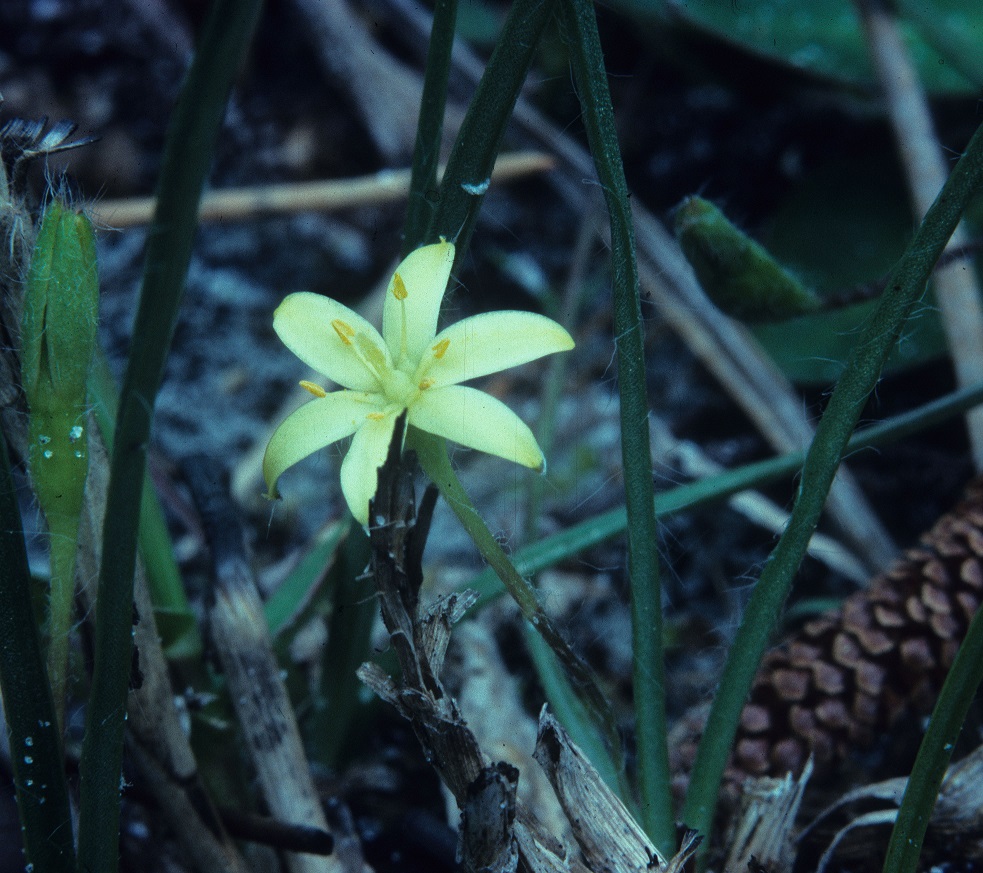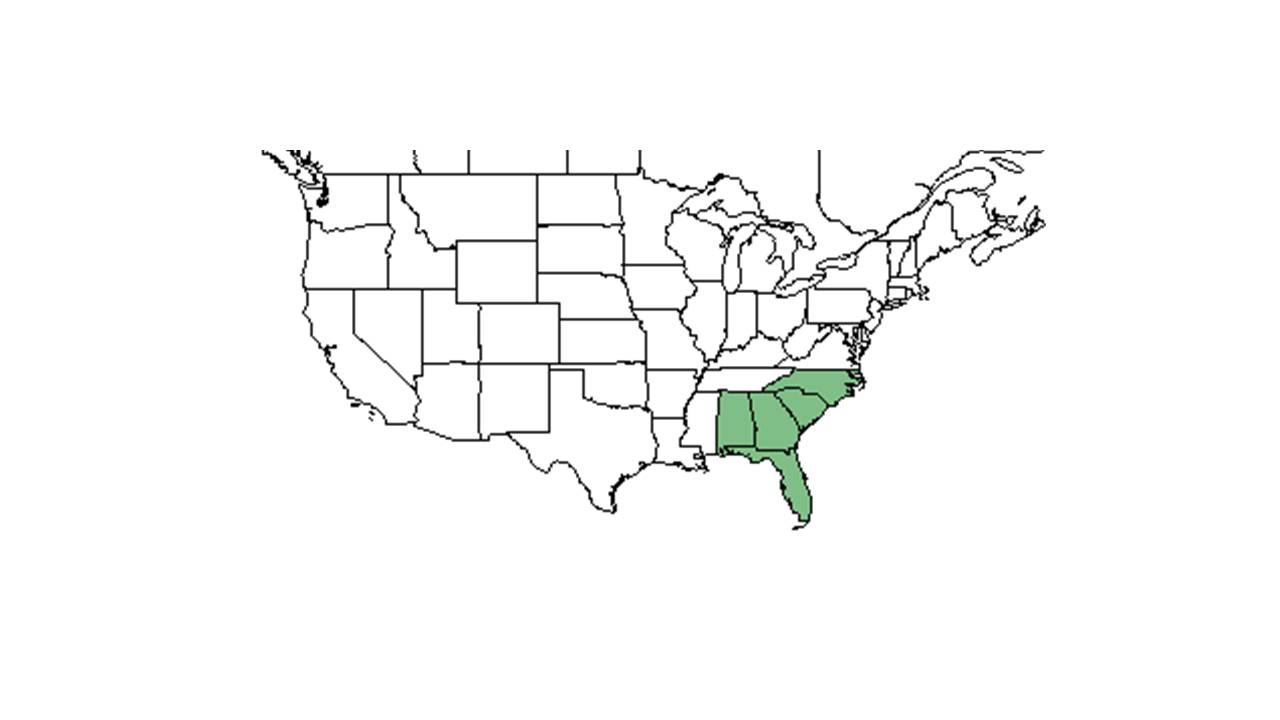Difference between revisions of "Hypoxis juncea"
Emmazeitler (talk | contribs) |
Emmazeitler (talk | contribs) |
||
| Line 39: | Line 39: | ||
===Phenology=== <!--Timing off flowering, fruiting, seed dispersal, and environmental triggers. Cite PanFlora website if appropriate: http://www.gilnelson.com/PanFlora/ --> | ===Phenology=== <!--Timing off flowering, fruiting, seed dispersal, and environmental triggers. Cite PanFlora website if appropriate: http://www.gilnelson.com/PanFlora/ --> | ||
| − | ''H. juncea'' generally flowers from April through May | + | ''H. juncea'' generally flowers from April through May and can be later especially in response to fire disturbance.<ref name= "Weakley"/> It has been observed flowering from February through June and in September with peak inflorescence in March.<ref>Nelson, G. [http://www.gilnelson.com/ PanFlora]: Plant data for the eastern United States with emphasis on the Southeastern Coastal Plains, Florida, and the Florida Panhandle. www.gilnelson.com/PanFlora/ Accessed: 12 DEC 2016</ref><ref name="FSU Herbarium"/> Fruiting was observed in March through June.<ref name="FSU Herbarium"/> Kevin Robertson has observed this species flower within three months of burning. [[KMR]] |
<!--===Seed dispersal===--> | <!--===Seed dispersal===--> | ||
Revision as of 20:18, 16 September 2020
| Hypoxis juncea | |
|---|---|

| |
| Photo taken by Gil Nelson | |
| Scientific classification | |
| Kingdom: | Plantae |
| Division: | Magnoliophyta - Flowering plants |
| Class: | Liliopsida – Monocotyledons |
| Order: | Liliales |
| Family: | Liliaceae |
| Genus: | Hypoxis |
| Species: | H. juncea |
| Binomial name | |
| Hypoxis juncea Sm. | |

| |
| Natural range of Hypoxis juncea from USDA NRCS Plants Database. | |
Common name: Fringed yellow star-grass
Contents
Taxonomic notes
Synonyms: none.[1]
Varieties: none.[1]
Description
A description of Hypoxis juncea is provided in The Flora of North America. Hypoxis juncea is a perennial herbaceous species.
Distribution
This species is distributed from southeastern North Carolina south to southern Florida and west to southern Alabama.[2]
Ecology
Habitat
It is a longleaf pine flatwoods/ sandhill species.[3] Generally, Hypoxis juncea is found in wet pine savanna communities.[2] However, it can also occur in disturbed areas, including grassy roadsides. It prefers open, moist conditions in sandy or loamy soils.[4] It can also be found in flatwoods and bogs occasionally.[5] Within the Atlantic and Gulf Coastal Plain, the USDA Natural Resources Conservation Service lists this species as a facultative wetland species that most often occurs in wetland habitats, but can also occasionally be found in non-wetland habitats.[6]
Associated species include Pinus palutris, Pinus elliottii, and Quercus laevis.[4]
Phenology
H. juncea generally flowers from April through May and can be later especially in response to fire disturbance.[2] It has been observed flowering from February through June and in September with peak inflorescence in March.[7][4] Fruiting was observed in March through June.[4] Kevin Robertson has observed this species flower within three months of burning. KMR
Seed bank and germination
Seeds of H. juncea were found in the seed bank after a fire disturbance in a flatwoods habitat in Hardee county Florida.[8]
Fire ecology
This species has been found in habitat that is maintained by frequent fire.[4] H. juncea appeared to have benefited from high fire frequencies in a study in 2003.[3] Observed H. juncea respouting at least 10 days after a fire that occurred in June of 1993.[9]
Pollination
The following Hymenoptera families and species were observed visiting flowers of Hypoxis juncea at Archbold Biological Station:[10]
Halictidae: Augochlorella gratiosa, Lasioglossum nymphalis
Deyrup observed this bee, Dialictus nymnphalis, on H. juncea.[11]
Use by animals
“…Hypoxis is one of the most important plants for quail, which occurred (resprouted) in the ranking only the first 1 or 2 months after fire."[12] Overall, though, it is considered to be of poor forage value.[13]
Conservation and management
Due to Hypoxis juncea being considered critically imperiled in North Carolina, it is listed as G4 on the global scale.[5]
Cultivation and restoration
Photo Gallery
References and notes
- ↑ 1.0 1.1 Weakley, A.S. 2015. Flora of the southern and mid-atlantic states. Working Draft of 21 May 2015. University of North Carolina at Chapel Hill, Chapel Hill, North Carolina.
- ↑ 2.0 2.1 2.2 Weakley, A. S. (2015). Flora of the Southern and Mid-Atlantic States. Chapel Hill, NC, University of North Carolina Herbarium.
- ↑ 3.0 3.1 Glitzenstein, J. S., D. R. Streng, et al. (2003). "Fire frequency effects on longleaf pine (Pinus palustris, P.Miller) vegetation in South Carolina and northeast Florida, USA." Natural Areas Journal 23: 22-37.
- ↑ 4.0 4.1 4.2 4.3 4.4 Florida State University Robert K. Godfrey Herbarium database. URL: http://herbarium.bio.fsu.edu. Last accessed: June 2014. Collectors: Loran C. Anderson, Karen MacClendon, R. Komarek, and Annie Schmidt. States and Counties: Florida: Calhoun, Jefferson, Liberty, and Wakulla. Georgia: Thomas.
- ↑ 5.0 5.1 [[1]] NatureServe Explorer. Accessed: May 30, 2019
- ↑ USDA, NRCS. (2016). The PLANTS Database (http://plants.usda.gov, 30 May 2019). National Plant Data Team, Greensboro, NC 27401-4901 USA.
- ↑ Nelson, G. PanFlora: Plant data for the eastern United States with emphasis on the Southeastern Coastal Plains, Florida, and the Florida Panhandle. www.gilnelson.com/PanFlora/ Accessed: 12 DEC 2016
- ↑ Kalmbacher, R., et al. (2005). "Seeds obtained by vacuuming the soil surface after fire compared with soil seedbank in a flatwoods plant community." Native Plants Journal 6: 233-241.
- ↑ Pavon, M. L. (1995). Diversity and response of ground cover arthropod communities to different seasonal burns in longleaf pine forests. Tallahassee, Florida A&M University.
- ↑ Deyrup, M.A. and N.D. 2015. Database of observations of Hymenoptera visitations to flowers of plants on Archbold Biological Station, Florida, USA.
- ↑ Deyrup, M. J. E., and Beth Norden (2002). "The diversity and floral hosts of bees at the Archbold Biological Station, Florida (Hymenoptera: Apoidea)." Insecta mundi 16(1-3).
- ↑ Hughes, R. H. (1975). The native vegetation in south Florida related to month of burning. Asheville, NC, USDA Forest Service.
- ↑ Hilman, J. B. (1964). "Plants of the Caloosa Experimental Range " U.S. Forest Service Research Paper SE-12
